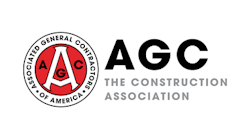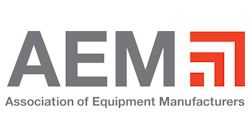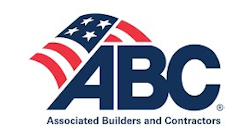Preparing sites for new construction receives as much negative publicity as anything in our industry, often because the complainers have a narrow and inaccurate view of what is happening. There are countries where the destruction of natural resources has been uncontrolled and little thought has been given to the infrastructure or health of future generations, but we have been fortunate in the United States in that few of our land-clearance projects have precipitated disasters for the communities in which they are located. Most states, for example, have developed strict and sensible regulations about what you can and cannot do with living trees. Before you start any clearance you should check those local rules, bearing in mind that this is not a battle but cooperation between professionals for the benefit of everybody in the community.
Say “land clearance” and many people think of beautiful trees cut down, but that is only part of the picture. There have been movies that depict land-clearance workers as villains because they cut down Boy Scout cabins by Lake Gitcheepooree or ruin the secret trail to the hunting grounds behind the Leaning Cypress Country Club. Most land-clearance projects are nothing like that. They are well-planned, well-regulated, and completed without melodrama.
Sample Regulations
Trees are the principal beneficiaries of protection by public authorities—trees and all the other aspects of nature that rely on them. That includes us. “Trees transpire considerable amounts of water each day and assist in purifying the air,” says Rick Joyce, director of the Lee County Division of Environmental Services in Fort Myers, FL. “They precipitate dust and other particulate airborne pollutants from the air and, through their root systems, play an important part in countywide soil conservation, erosion control, and flood control. Trees supply shade for the community and cool the air and land. They reduce noise levels and glare. The protection of trees in our county, then, is not only desirable but essential to the health, safety, and welfare of all our citizens, present and future.” Protecting trees is not just a role for registered environmentalists. (Mind you, we all occupy and rely on our environment, so who isn’t an environmentalist?) “Some trees are more beneficial than others as necessary contributions to our county’s environment and it is not necessary to protect each and every tree in order to attain the publicly beneficial result of a tree-protection program,” Joyce explains.
“We have worked hard to evolve our working relationship with land-clearing and site contractors,” Joyce adds. “We attempt to be responsive and realistic about fill amounts, site excavation, grading, and the retention of trees. These efforts are improved by having five certified arborists on the ES [Environmental Sciences] staff. We have also evolved our vegetation-removal process to be pretty straightforward, with clear parameters for approval. All of this has resulted in fewer time delays, less arm wrestling, and fewer violations—a good thing for all involved.”
Are any trees exempt from the regulations? In many counties nationwide, you can remove trees if they are on public rights of way and their removal is done by or on behalf of a state, county, federal, municipal, or other governmental agency in pursuance of its lawful functions and activities in the construction or improvement of public rights of way. You can remove a protected tree if it is dead, or if it has been damaged or destroyed by natural causes beyond saving, or if the tree is a hazard as result of an act of God and endangers life and property. After severe thunderstorms, floods, tornadoes, and hurricanes there is plenty of land clearance, more than anybody wanted. Water, electrical, sewer, and communication companies can remove protected trees if they are in or adjacent to a public easement or right of way, as long as the removal is limited to areas necessary for maintenance of existing lines and facilities or for construction of new lines and facilities required to provide essential service to the community. There are other exceptions to the “no cutting down the trees” rule, so you can see that the regulations involved have a large measure of common sense in them. From our research it appears that we should not cut down protected trees unless the removal is beneficial to a community’s growth and healthy survival. That would usually mean that you can cut trees, say, on a lot zoned for single-family residential use—a lot, in many communities, that is less than 5 acres.
Cooperation at the Site
At some sites the clearance of wooded areas is done by two separate groups. The first comes in with its chain saws and cuts down the trees, and then takes the trunks away for use by the timber industry. The second group (often grading and excavation contractors) then comes to clear the branches, take out the stumps, and grade the site to its specified standard for building. This second group uses chippers, stump grinders, and tub grinders to turn vegetation into useful byproducts and to reach the level of clearance that the builders see. At Toyota’s site for its new production plant (a 2,000-acre site in South San Antonio, TX) one company undertook all the work.
Houston-based W.T. Byler Construction LP specializes in grading, excavation, soil stabilization, paving, and railroad construction. “We usually subcontract the land-clearance work,” notes Jimmy Price, project manager for the contractor. “This job for Toyota was so big, however, that we decided to take it on for ourselves.” W.T. Byler has enough employees—almost 500 of them—but needed to rent the necessary timber-processing equipment because it was something not used every day. There were some basic challenges. “Toyota is really strict about all of the environmental aspects of any job,” Price adds. “Our contract required that we implement several erosion control measures into the land clearing and mulching processes. We built a complex structure around the site to filter out all wood chips, rocks, and silt to keep them from entering a nearby river and creek.” Add to that the stipulation that the land clearance had to be completed in a two-month window, in the months of January and February. They are seldom favorite work months in any state.
Choosing the right grinder was important because speed and efficiency were essential. The contractor received many proposals from manufacturers, several of whom advised the work couldn’t be completed in the scheduled time. “A Vermeer factory representative visited the site and brought along an HG525, a 525-horsepower horizontal grinder,” Price recalls. “We saw it in action. I couldn’t tell that a competitive 1,000-horsepower grinder was doing any better than the Vermeer, so we gave the Vermeer grinders a try, and we’re glad we did.” The company rented two, one with tracks and one with wheels; the tracks would serve well if it were wet or raining. The Vermeer HG525 horizontal grinders have a high-capacity infeed system, a patent-pending SmartFeed system, and the first standard thrown-object deflector for horizontal grinders. At the Toyota site, the crew of 28 used both grinders constantly, 10 hours a day. The estimated production was about 80,000 yards of trees in the two months specified for the job.
At a very different site, some 15 miles north of Tucson, AZ, 80% of the 1,035 acres for Saguaro Ranch will remain undisturbed, natural open space. Parcels for the single-family luxury residences will be 4 to 5 acres. The ranch is an upscale residential development situated at the base of Tortolita Mountain Park. “The greatest challenge related to infrastructure development on the project is ensuring that the sacred desert setting is treated sensitively,” notes Dan Keeley, vice president of KE&G Development LLC, the contractor handling all infrastructure development. The company has been based in Arizona for more than 30 years and employs 275 people. “The owner of the project, Saguaro Ranch Development Corporation, is committed to developing the property with a new standard of minimal environmental impact.”
One way in which the KE&G crew is managing the project’s environmentally stringent requirements is by using an unusually large and powerful machine in the clearance and preparation work. It’s another Vermeer, a 600-horsepower, 220,000-pound surface mining machine usually called a terrain leveler. After salvaging native plants and collecting boulders, the contractor’s crew uses the Vermeer T1255 Terrain Leveler to establish the roadway subgrade. “This machine cuts the rock in place instead of fracturing it on a seam,” Keeley observes. “It’s less invasive than some other methods and offers minimal disruption of the terrain outside the working space.” The terrain leveler can be used for trenching at the site when the milling attachment is replaced by a trenching boom.
Using the Waste
One of the reasons that land clearance was viewed so negatively was that all the waste generated by sawing and cutting, pulling, and tearing used to be just that: waste. For some years now, land-clearance contractors have realized that the materials they generate have value to others. It may be the mulch made by grinders and chippers that is used residentially. It may be the tree trunks that are taken for processing to lumber mills. In days gone by the “rubbish” used to be taken to the landfill. Then the landfills didn’t want it because they had so little space available for uncut branches and tree stumps. To take the materials from cleared land to the landfill became expensive.
Instead of throwing materials away—and paying to do so—many contractors looked for ways to profit from them. In some states, they make arrangements with other contractors for mutual profit. An example would be the land-clearance contractor who grinds up the debris and gives it to a hauler who transports it (by the truck load) to electric plants and paper mills. The contractors do their work for nothing! The land-clearance company doesn’t pay the other for hauling away the debris and the hauler has free cargo for his business. It works well for everybody. Among other practical and beneficial uses for the debris of land clearance is its ending up as the base for mat systems that prevent soil erosion. It’s a kind of mulch but, in some ways, more important. Wind and rain in storms precipitate soil erosion and so does some road and house construction. The wood from grinders can stabilize the ground, prevent unwanted chemicals from going into rivers and streams, and protect the topsoil for future growths. The second layer of soil is frequently incapable of supporting plants.
Dozers in Land Clearance
You expect to find saws, chippers, and grinders in land-clearance work, but there are still contractors who remove trees with a dozer. Dozers have been successful for small tree and shrub clearance at many sites where houses, small shopping centers, or apartments will be built. Those are often the sites that just look messy before site preparation, with no large trees or other obstacles. Dozers are excellent machines for removing rocks and boulders, too. A grading and excavation contractor can sometimes do the land clearance with his existing equipment. If this is the method you choose for your site—maybe because you have a powerful dozer and only a few trees to remove—there are precautions to take.
We gleaned the following words of advice from several contractors. All of them warn you to be cautious, to look up to see what is happening above you, to look around to see that nobody is within harm’s reach, and to determine before you proceed with the dozer the direction in which the tree will probably fall. For small trees (with diameters less than 4 inches) and brushwood, experienced workers recommend that you put the blade a few inches below grade and travel forward slowly. The first pass will probably knock over small trees and brush. Your second pass will clear them away to a pile for collection and removal. If the trees have diameters between 4 and 10 inches, you would raise the dozer blade for increased leverage. As the tree begins to fall, back away smartly to clear the roots that are coming up, then go forward again with the blade lower to dig the roots free with the dozer’s pushing and lifting action. If you want to use a dozer for large trees (more than 10 inches across), it’s a slow job. Check the tree first to see if there are dead branches that could fall on the dozer (and you). When satisfied that you won’t shake limbs down, move the dozer forward with the blade high and centered on the trunk as much as possible. Some contractors recommend that you attack large trees with large root systems from more than one direction. Make a cut on the side of the tree opposite to the direction of its likely fall. Go down to cut away some of the larger roots there. Then do the same on either side of the tree, so that you have three sides of a rectangle. If you build a ramp above that first cut you can get good leverage for pushing the tree down. When the roots start to come up, get back.
It would be wise to protect the dozer. If possible, protect the engine from branches (even small ones) with side covers. If you are using more than one dozer, it will be better if they are not working closely together. Protect your workers, too. Many of the trees you uproot will not be dead and they will want to unbend and fly back when they dislodge themselves from any tangles. Most of the damage caused to dozers in land clearance seems to come from limbs puncturing the radiator or breaking a hydraulic line. Final advice from those who have done this before: It is easier to bring down a whole tree with a dozer than to cut it down to a stump and then try to doze away the stump. One of the most interesting related tools we’ve seen is the tree saw from attachment maker Rockland; it goes on the front of a dozer.
Equipment for Land Clearance
Much of the equipment you need for land clearance is already in your yard, but you will need to get the specialized items. A caution about everyday tools like chain saws: they can be, literally, lethal and should never be treated as if everybody is an expert. For the shredding, grinding, and chipping, there are several companies that specialize in this kind of equipment. Names that spring to mind are Morbark, Vermeer, Bandit Industries, Packer Industries, Diamond Z, Peterson Pacific, Rockland, Valby, and Universal Refiner. The machines are built to be durable and safe. One of the best changes in the last several years has been the standardization of enclosed operation or a thrown-object restraint system.
The Predator Shredder from Morbark is now available in a configuration on a fifth-wheel frame. With a two- or three-axle design, the machine is more portable and offers contractors quick setup time. The Predator usually processes the more difficult materials, such as construction-and-demolition debris, railroad ties, and others that are not suitable for high-speed grinding. Horsepower ranges from 325 to 455. Two of Morbark’s hand-fed brush chippers (the 2070XL Twister and the 2050 Clipper) now offer two knife drums as standard. What this means for productivity is that there are two cuts per revolution instead of one. Other features of the compact Clipper that may appeal to land-clearance contractors are the torsional axle (for stability), wheels independent of each other for smoother towing, and that heavy-duty tubular steel-welded frame.
When usable timber has been removed from a land-clearance site, the remaining materials are often referred to as “slash.” To handle this waste, you need a large brush chipper, a tub, or a horizontal grinder. Which is best? If the land involved is 15 acres, a large towable brush chipper may be your best choice. Vermeer has several models in this range, with capacities for handling diameters of 18 to 20 inches. If the acreage involved is more than 5 acres, you may be more productive with a tub or horizontal grinder, Vermeer advises. Larger chipping machines are often towed, but Vermeer offers some models with tracks for negotiating the site more easily. Another advantage of a grinder versus a chipper, even from the same manufacturer, is that the larger grinders give you the ability to size the end product. Chippers usually can’t do that.
Check the Web sites of the manufacturing companies mentioned above. You will find good, detailed information, and there is advice available on the selection of the most appropriate equipment and techniques for your particular applications.
Grinders wear out; that is the nature of their function. If the hammers are allowed to go without the correct maintenance for any length of time, the hammermill could go out of balance, causing unnecessary wear on the bearings and several other (costly and dangerous) accidents related to excessive vibration. One reason why maintenance used to be ignored by too many contractors was that it took so long. Replacing teeth and hammers could take a whole day. Today, companies like Vermeer have designed machines where the operator can change an individual hammer in minutes, without removing the other hammers. When you shop today, make sure the hammers are reversible, too, to double their service.
Safety is our final aspect of land clearance, but it is also the most important. Everything happening in a land-clearance operation is breaking, cutting, pushing, pulling, and reducing. Every action is dangerous to the person doing it, but probably more hazardous to any careless bystander. There shouldn’t be any bystanders! Before the saws cut and the dozers push and the grinders grind, every worker should know what is going on where, and how to stay a safe distance from any flying objects. Horizontal grinders have become so popular because they tend to minimize the danger of flying objects, but experienced contractors say the occasional flying menace is something everybody should be alert to. Ask your chosen manufacturer about the safety features of the equipment. Tell your crews about all the dangers at the site.








